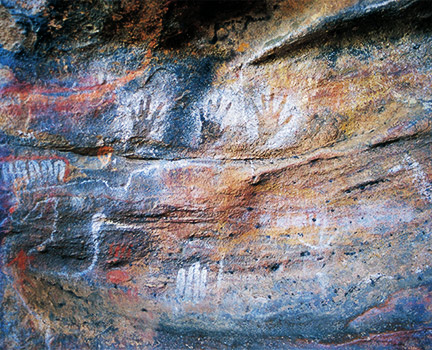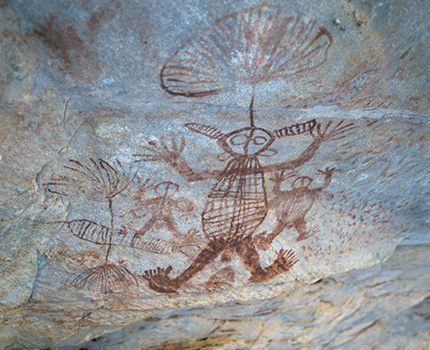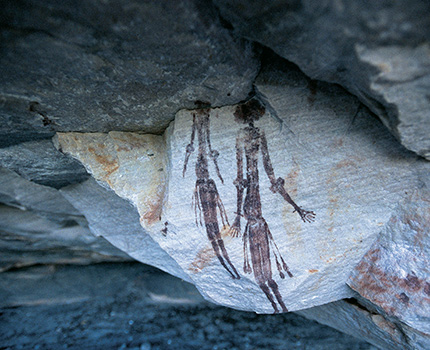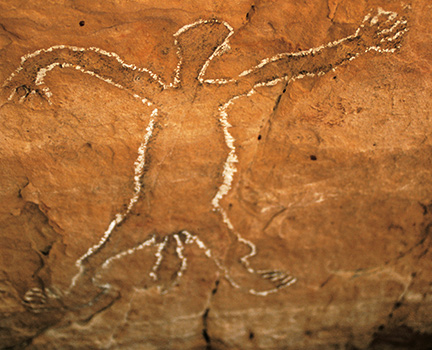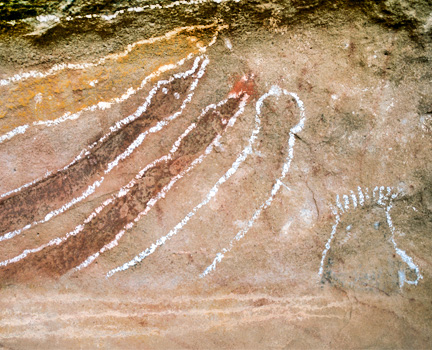Kimberley Rock Art – A New Way of Working Together
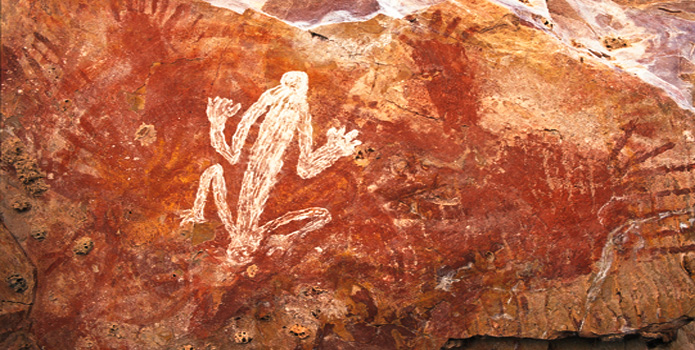
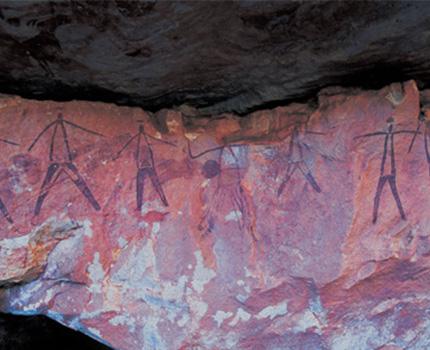
Professor Peter Veth of the University of WA leads the Kimberley Visions project, involving comparative archaeological documentation and dating of early rock art repertoires from across the Kimberley and western Arnhem Land in northern Australia.
In this article, Peter discusses some of the organisations that are contributing to this work and the type of technologies they are using. He describes an evolution in the way research like this is approached.
There are several organisations helping with the Kimberley rock art project. What's ANSTO?
That is the Australian Nuclear Science and Technology Organisation. It's the body in Sydney that does medical research and environmental science. It has a small nuclear processing facility.
Where do they fit in with work around the Kimberley rock art?
They date things for us. I have people who can do cosmogenic work. If you have a rock that falls, and it's getting radiation in it from the sun, you can date when that happens. That's a way of bracketing when the landscape evolves and changes. ANSTO does that. They also do radiocarbon dating. They have people who come and work on the landscape evolution and do the dating work alongside us.
There is a Melbourne University team of geochronologists. They also have other people who do a different kind of dating. Then they have people who work on DNA. Microbes are active in the art during wet season. The DNA people can actually take swab samples and find out whether they're arid or humid adept microbes and how that's contributing to the preservation of the art.
There is a Wollongong University team who work in optical simulated luminescence. They find out when stains that get blown into a cave or carried around by a wasp and put on top of a painting, last saw sunlight.
How do you describe your own work?
We at UWA are the archaeologists or social theorists. I did anthropology at UWA. I worked out in the Western Desert for my PhD. My specialisation is archaeology, so I approach rock art as a symbolic behaviour and I put it in the larger context. I usually excavate and do dating and put the art in context. I wouldn't just look at the art in isolation. That's not my background. I'm an archaeologist with rock art specialisation.
Who else is contributing to the project?
Kimberley Foundation of Australia is a philanthropic body. They've been around for 20 years. They have a broad range of networks that help in many ways including financial support.
Dunkeld Pasture is one of the linkage partners. We also have Murujuga Aboriginal Corporation. These are industry partnerships working up on Murujuga toward world heritage listing and identifying the final gaps after the national heritage listing. We also have the Aboriginal Corporation as a partner. We have Rio Tinto, because they help financially because of the agreement over the national heritage listing. We also have Parks and Wildlife assisting us.
Dunkeld is a pastoral station up there. It has facilities and research infrastructure, and it can supply fuel and some chopper time to help us reach the art in very remote areas.
Archae-aus in Perth are also involved. Fiona Hook owns that and they put in their personal time to contribute. The amount of in-kind support in these projects is huge. You can achieve an enormous amount with critical mass.
It sounds like a diverse range of individuals and groups have come together.
The new models of working are different to the way things may have worked in the past. Once individuals or groups might have felt that working on their own might have been somehow more efficient. They might have said, "I'm not going to work in the Aboriginal Corporation. I'm only going to work with industry. I'm only going to work with research." It doesn't work like that anymore.
The government doesn't have the funds to give individuals or groups the recurrent funding they need. That change has motivated people to come together and find a positive way to help each other. There is a lot more cooperation and that really does make for a richer and more sustainable way of working. Each of the different groups bring valuable skills and perspectives. Now the traditional owners are central to both the consultation and research process. Ultimately that's exactly what is needed for such a huge project like this to be viable and meaningful. This way of working is positive and an exciting change in how research gets done.
Image Usage: images are being used with the permission of the copyright owner. Please do not copy or reproduce these images without obtaining permission. Wandjina® is a registered trademark of the Kimberley Aboriginal Law and Cultural Centre.
Aboriginal Rock Art Article Series:
